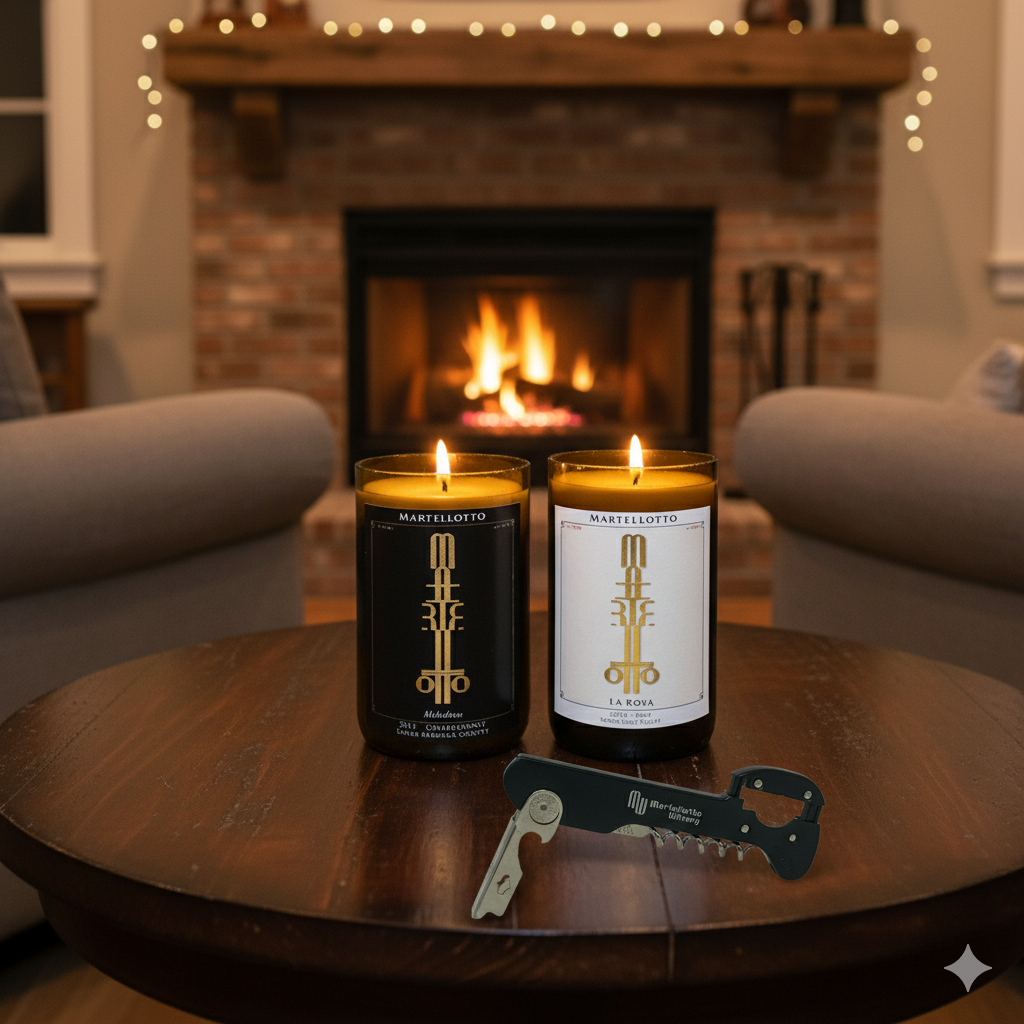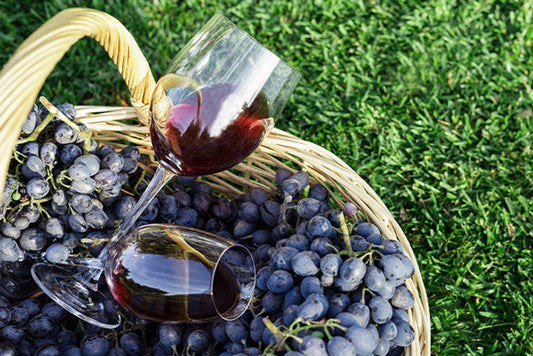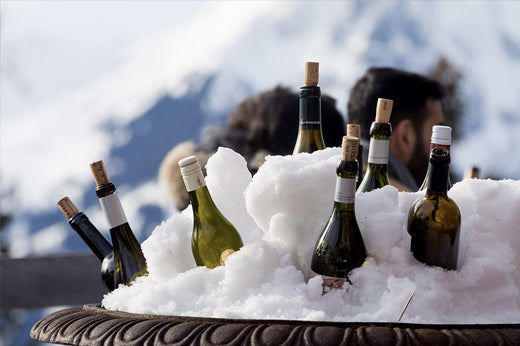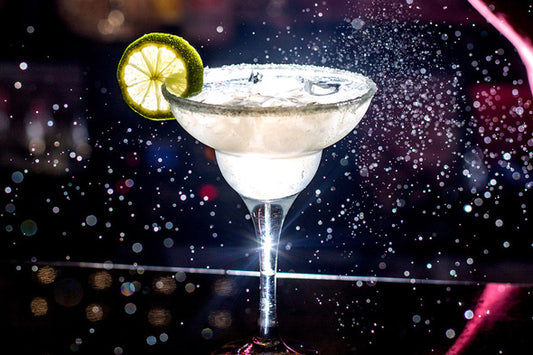
How to Make Amaro in 2020 with This Savory Homemade Amaro Recipe
You can easily make homemade amaro and spice up your cocktails, sparkling wine or water, or add to coffee, tea, or lemonade - whatever your imagination creates!
Amaro vs. Bitters: What’s the Difference?
The Italian word amaro means bitter, so, technically, amaro is a form of bitters from Italy. Bitters is the tincture added in drops to cocktails. Amaro, a bittersweet liqueur, is meant to drink straight or added to cocktails.
Plants, herbs, and other botanical ingredients infuse both amaro, also called potable bitters, and bitters. Vermouth is a type of amaro because it contains wormwood, a bitter compound.
The alcohol content in amaro ranges from 16% to 40% vs 44% for bitters and bitters are much more concentrated.
Bitters is used as an ingredient in cocktails, other beverages, and food. Also called tincture bitters, popular brands include Angostura and Peychaud’s. Amaro is drunk as an after-dinner drink, a digestif.
Both products have deep and complex flavors from earthy and natural ingredients like herbs, roots, bark, spices, seeds, fruits, or flowers.
Amaro’s sweetness comes from added simple syrup, which is not found in bitters. Simple syrup makes amaro potable, or drinkable. Bitters alone is an ingredient, not a beverage.
With thousands of amaro-type liqueurs made around the world, many still use secret recipes. Popular amaro brands show a wide variety of ingredients:
- Fernet-Branca - intensely herbal
- Cynar - vegetal
- Aperol - orange
- Campari - grapefruit
- Jagermeister - herbal, medicinal

12 Health Benefits of Bitter Compounds
Historically, both the diet and medicine incorporated bitters. Herbal blends stimulated appetite and digestion and supported a healthy gastrointestinal system.
Plants developed bitter compounds as protection against bacteria and fungus. These compounds provided similar benefits to humans. The human body has many receptors for bitter compounds, including the taste buds in our mouths, which trigger these protective processes.
Bitter compounds benefit the human body in many ways, including:
- Stimulate saliva, acids, and enzymes for digestion
- Increase the absorption of vitamins and nutrients
- Prevent fungal and microbial growth
- Lower inflammation and oxidation
- Relieve gas, bloating, heartburn and reduce acid reflux
- Improve blood circulation, remove impurities, support healthy blood sugar levels
- Inhibit food cravings and promote a healthy appetite
- Relieve upset stomach and nausea
- Promote a healthy liver and gallbladder function
- Support healthy skin
- Reduce the risk of ulcers
- Manage cholesterol levels
Some people believe bitters may be more beneficial than probiotics, but further research is needed.
Amaro was developed as a tasty way to prepare the body to digest food ahead of a meal. Today, people drink amaro both before and after meals to help with digestion.

The History of Amaro
Throughout history, as far back as ancient Egypt, bitters was added to wine to aid digestion. With anti-inflammatory properties, bitters also restored the body after over-imbibing. Asian cultures, particularly Ayurvedic and Chinese, used bitters in their diets.
These cultures found making bitters from wild and non-toxic plants had positive effects on the human body, including ridding the body of some toxins.
At almost every turn in history, bitters was added to food and drink, but the Italians made amaro a specialty. Bitters and amaro were made from ancient recipes in Italian monasteries and pharmacies to use as medicine.
People developed recipes based on the plants and herbs that grew nearby, so each one was unique to its location. Many recipes were passed down through generations of families. Drinking amaro from Italy is like drinking Italy’s history.
The British brought their use of medicinal herbal tonics to the New World. In the U.S., bitters and cocktails have been intertwined with dashes of bitters thrown into the newly created cocktail in the early 1800s. When Prohibition made its debut, people still took bitters but added sugar to make it taste better.
One of the most popular stories of bitters comes from Angostura bitters. Angostura used to be made from the bark of the angostura tree in the Venezuelan town of the same name.
Developed by a German doctor, Angostura helped battle malaria. Eventually, the doctor created a business by selling it to sailors. The product is now made in Trinidad and Tobago. Quinine, with its antimalarial properties, is another common ingredient in bitters.
Peychaud’s Bitters, developed by an apothecary in New Orleans and now produced in Kentucky, is an integral part of the city’s famous Sazerac cocktail.
How to Enjoy Amaro
Traditionally, people drank amaro before a meal to prepare the body for digestion. Over time, some drank it after a heavy meal to support digestion.
Now you can drink a small glass as an aperitif before dinner or add bitter greens such as arugula, kale, broccoli rabe, or watercress to your salad at the beginning of supper.
After dinner, especially a large or heavy one, improve digestion by sipping a small glass or try green or chamomile tea.
Amaro is served in a small glass without ice, called neat, but you can pour it over ice or add it to tonic water or club soda.
With wide-ranging varieties, flavors, and styles, amaro is a favorite ingredient in craft cocktails. Some people add it to coffee or even beer!
Many bartenders today offer less sweet and more savory cocktails, which are more interesting for the customer. An essential part of this trend, bitters and amaro provide flexibility, limited only by the imagination.
Some different styles include:
- Light: lighter in color with more citrus notes
- Medium: around 30% alcohol, balanced between bitter, sweet, and citrus
- Fernet: more sharply bitter
- Alpine: made with alpine herbs, 17-30% alcohol
- Carciofo: made with artichoke, 17% alcohol
- Tartufo: made with black truffles, 30% alcohol
- China: made with Cinchona calisaya bark
- Rabarbaro: made with bitter rhubarb
- Miscellaneous: made with honey, fennel, or unripe green walnuts (nocino)
In the U.S., you can buy some bitters from non-liquor retailers. Not considered alcoholic because it is not a beverage, it is sold differently from amaro.
Homemade Amaro Recipe Tips
You need a few basic things to make amaro:
- a high-proof neutral grain alcohol
- a bittering agent
The bittering agent is the backbone, so be sure you get the right agent: gentian root is popular. Others include wormwood, angelica root, cherry tree bark, or a cinchona bark.
You can add other herbals, spices, fruits, roots, and barks to create a unique blend.
Consider using a recipe if you haven’t made it before.
How much of each ingredient is up to you. Start with a 1:5 ratio, bittering agent to alcohol.
Then make small batches from different ingredients to figure out what you like. You can blend them to see the overall effect.
Understand the process is not quick if you want good results.
Use local and seasonal ingredients as much as possible. Know what you are using because some elements might be toxic.
Use a mortar and pestle to break apart the plant fibers.
Strain the infusion several times through cheesecloth to get all the plant material out.
Note: You can make non-alcoholic amaro using a non-alcoholic spirit or water, but the resulting product will have a short shelf-life.
You can call your result a “natural” liqueur to impress “natural” wine hipsters.

How to Make Amaro with the Martellotto Amaro di California Recipe
Greg Martellotto, owner of Martellotto Winery in Happy Canyon AVA near Santa Barbara, has an Italian background. He first experienced Amaro as a student abroad in Italy. After his first taste of cannoli and Cio Ciara amaro while in Palermo, he was hooked.
Ingredients:
1 oz. cinchona bark
1/2 oz. bitter orange peel
1/2 oz. ground ginger
1/2 oz black peppercorn
1 oz. cinnamon stick
1/4 oz. cardamon
1 stick vanilla
1 Liter high-proof (190 proof) alcohol. You can use vodka or grappa, but the extraction will not be the same.
You can order the botanicals, dried herbs, and bitter compounds from a handful of specialty retailers. Or, if you have a food dehydrator, you can make your own. This works particularly well for drying fruits, fruit rinds, herbs, and flowers.
Steps:
- Assemble dried herbs, botanicals and bitter agents. You can wrap in a cheese cloth to make a bouquet garni, or you can immerse the ingredients in a large glass jar. The jars used for sangria or Mexican aguas are good. Use a tight fitting seal to limit evaporation.
- Keep out of direct light and let infuse for 2 weeks.
- Filter the liquid from the botanical ingredients.
- Make a simple syrup of equal parts water and sugar over low heat. Use 2 liters of water plus 2 liters (about 8 cups) of sugar. (Since, we started with high-proof alcohol and we want to end up with about 30% ABV, we add 2/3 parts simple syrup to 1/3 part infused spirit.)
- Combine the simple syrup with the infused high proof alcohol in a large glass container. Let sit for 8 weeks in a cool area, outside of direct light. Stir once a week.
- Bottle in 375ml bottles with a cork stopper.
Give away the bottled amaro, it makes a great gift. Don’t be surprised if you receive requests to make more.
Play with the recipe. Be creative!
~Alla Salute!

Martellotto Winery Salutes Homemade Amaro Makers
We hope you enjoy making homemade amaro. Enjoy it with good food and company and share it with friends and family.
Note: you cannot sell or otherwise commercialize homemade amaro without proper legal approvals.
Here’s to herbal amaro any time of year!






